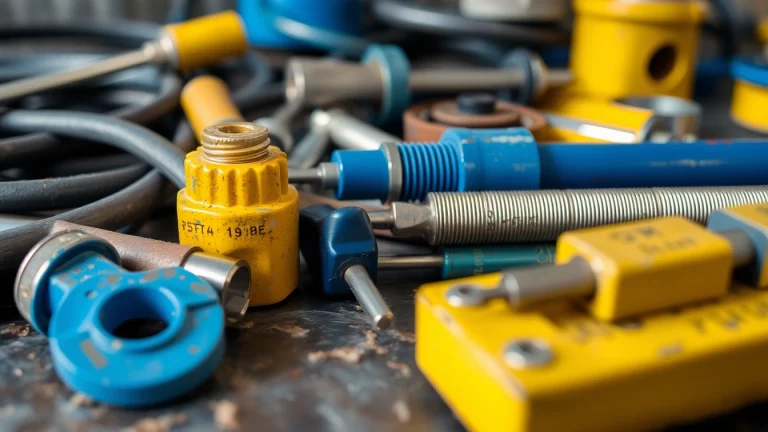
Essential Welding Supplies for Every Professional and Hobbyist
Understanding Welding Supplies: A Comprehensive Guide
Welding is an essential process in various industries, from construction to automotive, and selecting the right welding supplies is crucial for achieving high-quality results. This guide explores the various types of welding supplies, components needed for successful welding, safety gear, and more. Understanding these elements will empower both professionals and hobbyists to make informed purchasing decisions.
1. Types of Welding Supplies Available
Welding supplies encompass a broad range of tools, materials, and accessories that facilitate the welding process. Below are the main categories:
- Welding Equipment: This includes welding machines (MIG, TIG, arc), plasma cutters, and multi-process welders. These machines represent the core of the welding operation, allowing users to join metals effectively.
- Welding Consumables: Consumables such as filler metals, electrodes, and welding wires are used during the welding process. They are critical for achieving strong and durable welds.
- Protective Gear: Safety should always be the primary concern when welding. This category includes welding helmets, gloves, jackets, and respirators that protect the welder from harmful fumes and sparks.
- Hand Tools: Essential hand tools include chipping hammers, wire brushes, clamps, and magnets, which aid in preparing and finishing welds.
- Welding Accessories: Accessories like welding carts, tables, and leads enhance the welding experience, providing organization and ease of movement while working.
2. Essential Components for Successful Welding
To conduct a successful welding operation, several components must work together harmoniously:
- Power Source: The type of welding process chosen determines the required power source. For instance, MIG welding typically utilizes a constant voltage power supply.
- Welding Electrode: Electrode shapes and materials vary depending on the welding process, affecting the outcome and endurance of the weld. Choosing the correct electrode is vital.
- Shielding Gas: In processes like MIG and TIG welding, shielding gases (such as argon, CO2, or helium) protect the weld area from contamination by the atmosphere.
- Filler Material: Selected to match the base metals being welded, filler materials, including rods and wires, strengthen the joint created during the welding process.
3. Safety Gear: Protecting Yourself While Welding
Welding projects carry inherent risks, making safety gear a necessity. Below are essential safety items every welder should have:
- Welding Helmets: They protect eyes and face from sparks, heat, and harmful ultraviolet (UV) radiation.
- Welding Jackets: Fire-resistant jackets are vital in preventing burns from heat and sparks.
- Gloves: Welding gloves are designed to protect hands while providing flexibility and dexterity.
- Respirators: Essential when working in environments with harmful fumes, ensuring proper ventilation and protection against toxic substances.
- Foot Protection: Non-slip, steel-toed boots help prevent foot injuries from dropped equipment and protect against electrical hazards.
Choosing the Right Welding Equipment for Your Needs
When selecting welding equipment, it’s essential to consider your specific requirements, including the type of materials you’ll work with, the welding processes you’ll use, and your expertise level. Here, we delve into the most common welding methods and how to choose the right equipment accordingly.
1. Comparing MIG, TIG, and Stick Welding Equipment
The choice of welding process affects the equipment required. Below is a comparison:
- MIG Welding: Ideal for beginners, MIG welding uses a continuously fed wire electrode and is fast and efficient for thin materials. It typically requires a MIG welder, shielding gas, and filler wire.
- TIG Welding: Known for its precision, TIG welding employs a non-consumable tungsten electrode. It’s suitable for thin metals and requires more skill. Essential equipment includes a TIG welder, filler rods, and shielding gas.
- Stick Welding: This method uses consumable electrodes and is versatile and portable, making it great for outdoor work. Its equipment includes a stick welder and electrodes, having minimal impact from wind.
2. Factors to Consider When Selecting Supplies
Several factors determine the appropriate welding supplies for your projects:
- Material Type: Different materials require specific types of welding processes and equipment. For example, aluminum may need TIG welding, while steel can be weldable using MIG or stick methods.
- Thickness of Material: The thickness affects the choice of power setting and welding method. Thicker materials often require different techniques compared to thinner ones.
- Project Environment: Indoor and outdoor projects may necessitate different equipment or protective measures, especially with wind, humidity, or temperature considerations.
- Experience Level: Beginners may favor easier welding processes like MIG, while experts can select more challenging methods like TIG for intricate work.
3. Reliable Brands for Welding Supplies
Choosing reputable brands can significantly affect the quality and durability of welding supplies. Some trusted names in the industry include:
- Miller Electric: Known for innovative technology and quality welding machines.
- Lincoln Electric: A well-respected manufacturer of welding and cutting equipment.
- ESAB: A global leader in welding and cutting, providing a wide range of equipment.
Maximizing Efficiency with the Right Welding Tools
Efficiency in welding is paramount for achieving the desired results in the least amount of time. This section provides insights into best practices, tools, and maintenance tips that can make a significant difference in your work.
1. Best Practices for Using Welding Supplies
To ensure high-quality welds while maximizing efficiency, consider the following best practices:
- Prepare Your Workspace: An organized and clean workspace helps prevent accidents and enhances productivity.
- Select Appropriate Settings: Before starting, adjust the amperage and voltage based on material thickness to avoid issues such as burn-through or insufficient penetration.
- Regularly Inspect Equipment: Periodically check your welding equipment and supplies for wear and damage, ensuring they operate optimally.
2. Tools to Enhance Your Welding Skills
Beyond core welding supplies, various tools can improve skills and result in higher-quality welds:
- Welding Magnets: These are used to hold workpieces in place securely, allowing for hands-free operation.
- Welding Clamps: Essential for holding metal pieces together, clamps are vital for maintaining alignment and stability during welding.
- Chipping Hammers: After welding, using a chipping hammer removes slag and spatter for cleaner joints.
3. Maintenance Tips for Longevity of Supplies
Maintaining welding supplies extends their lifespan and improves performance:
- Clean Equipment Regularly: Remove any residue or contaminants from welding equipment and supplies.
- Proper Storage: Store welding machines and consumables in a dry and secure place to prevent rust and damage.
- Inspect Safety Gear: Regularly check your safety gear for wear, replacing items like gloves and helmets as needed.
Where to Buy Quality Welding Supplies Online
The convenience of online shopping provides access to a wider range of welding supplies compared to physical stores. This section covers some of the best practices for purchasing welding supplies online.
1. Top Online Retailers for Welding Supplies
Several reputable online retailers specialize in welding supplies:
- Cyberweld: A comprehensive provider of welders and helmets from leading brands.
- Welding Supplies from IOC: Offers an extensive selection of MIG, TIG, and stick welders.
- WeldingOutfitter.com: Known for a vast selection of tools, materials, and accessories.
2. Benefits of Shopping for Welding Supplies Online
Shopping online presents several advantages:
- Convenience: Shop from the comfort of your home at any time.
- Comparative Prices: Easily compare prices from different retailers to find the best deals.
- Vast Selection: Access to a more extensive range of products than local stores can provide.
3. Comparing Prices: Getting the Best Deals
To ensure you’re making an informed purchase when shopping online, consider these tips:
- Check for Discounts: Many retailers offer sales, promotions, or bulk purchase discounts.
- Read Reviews: Customer reviews provide insights into product quality and help gauge reliability.
- Watch for Shipping Costs: High shipping fees can offset any savings, so factor this into your total cost analysis.
Common Challenges and Solutions in Welding Projects
Welding comes with its share of challenges. Understanding these issues and knowing how to address them can improve the quality of your work.
1. Troubleshooting Common Welding Issues
Common problems experienced during welding include:
- Porosity: Often caused by contamination; ensure that workpieces are clean and use the correct shielding gas.
- Overheating: Employ appropriate heat settings based on the material to prevent burn-through and warping.
- Undercuts: Ensure consistent motion and maintain a proper travel speed while welding.
2. Enhancing Your Welding Technique
Improving welding techniques can lead to better results:
- Practice: Regularly practice different welding techniques to enhance skill and confidence.
- Invest in Training: Consider taking courses or consultations with experienced welders for advanced techniques.
3. Seeking Professional Help: When to Call an Expert
Sometimes, professional assistance is necessary:
- Complex Projects: Engaging a skilled technician for intricate or large-scale projects ensures safety and standards.
- Equipment Issues: For mechanical problems with welding machines, expert diagnosis and repair are recommended.


